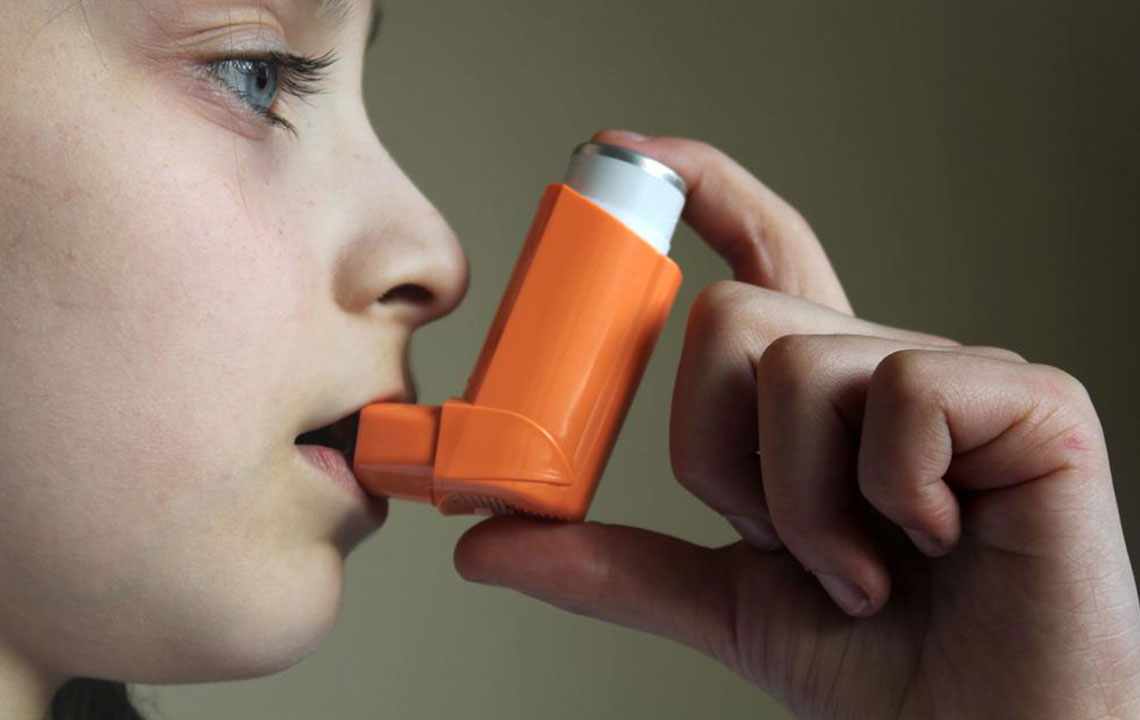Effective Tips to Treat Asthma

There are various treatment options for the common problem of asthma. It is a long-term disease that usually has no cure but can be dealt with minor adjustments, medications and lifestyle changes. Most people see that their asthma gets cured as they age, so most of the asthma treatment options involve controlling the disease.
A proper asthma treatment plan helps:
- Prevent chronic and troubling symptoms like shortness of breath, tightness in chest and coughing.
- Reduce the patients need for medicines considered to be a quick relief.
- Maintain steady levels of lung function.
- Maintain a steady breathing rhythm to enable sleep throughout the night.
- Maintain normal levels of everyday activity.
- Avoid, monitor and prevent emergency asthma attacks that may need immediate attention.
The best way to control asthma and manage it as a part of everyday life is to partner with the doctor completely and follow strictly the instructions and medications routines that are recommended.
How can one take in active role in controlling and treating asthma?
Here are some tips to control asthma.
- Be aware of the condition and how and when it affects you.
- Work alongside your doctor and identify and treat other health conditions that may potentially interfere with the management of the main problem of asthma.
- Avoid things and triggers that make asthma worse.
- Maintain a decent level of physical activity despite asthma as it is an important part of a healthy lifestyle and it helps prevent other health conditions apart from being good for mental health. There are medicines available that help an asthma patient stay active and pursue physical activities with ease.
- Work with health experts to follow a good action plan that helps manage the problem.
- An action plan aimed towards managing asthma involves receiving guidance on the medicines and exercises and lifestyle changes required, avoiding triggers of asthma, tracking the severity and level of the problem, actively responding to symptoms that are getting worse and seeking and receiving emergency care whenever required.
What are the different asthma treatment options?
Two types of asthma treatment options can help control and manage the condition:
- Quick-relief medicines
- Long-term control
Long-term control involves the use of medicines that can help reduce the inflammation in airways and further prevent the symptoms of asthma.
Quick-relief medications are also known as rescue options and help in relieving asthma symptoms that may flare up suddenly. Depending on the severity of asthma, the initial treatment can have various scenarios. Medicines required for following up the asthma treatment depend entirely on how well the controlled, targeted plan is working for the individual to help prevent asthma attacks.
The degree of the asthma changes with different environments. It can be different at home, work, school or elsewhere. It also depends on the exposure to factors that trigger or worsen the problem.
For example, a doctor may choose to change the medication or increase the dosage of if the asthma is not being controlled effectively. Alternately, a doctor may continue with the same plan or even reduce the medication for a few months or after a few months of long-term asthma treatment. It is these adjustments in the medications that can help maintain some semblance of control over the problem with minimal aid from mediations.
Asthma also affects different groups of people differently. For example, the symptoms can vary greatly for children, young infants, adults, teenagers, expectant women, smokers, those affected only due to excessive exercise, old people, people with heart problems, etc. The asthma treatment options and medications, thus, need to be adjusted accordingly.
It is also important to avoid things, triggers and factors that worsen asthma and its symptoms. It is important to recognize the triggers that worsen the problem and work towards preventing and avoiding their manifestation. To state a very common, simple example, people whose asthma gets triggered due to pollen grains should limit their outdoor time when the season of pollens is high in the air and environment. Triggers such as animal fur should be prevented by regular vacuuming and controlling the access of pets and animals in the main area, where the patient spends most of their time.
Allergy shots are also a good option for people who have identified the allergens and avoiding them is not possible. These shots help prevent the symptoms, but do not cure the root cause that is asthma.
Some common health conditions that make asthma harder to manage include sinus infections, runny nose, frequent colds, sleep apnea, reflux diseases and psychological stress.
Medicines that help manage asthma are usually recommended by the doctor after considering a number of factors. The dosage of a drug also matters a lot and needs to be adjusted according to the severity.
Short-term or quick relief medications are also popular asthma treatment options that help manage the condition effectively.


